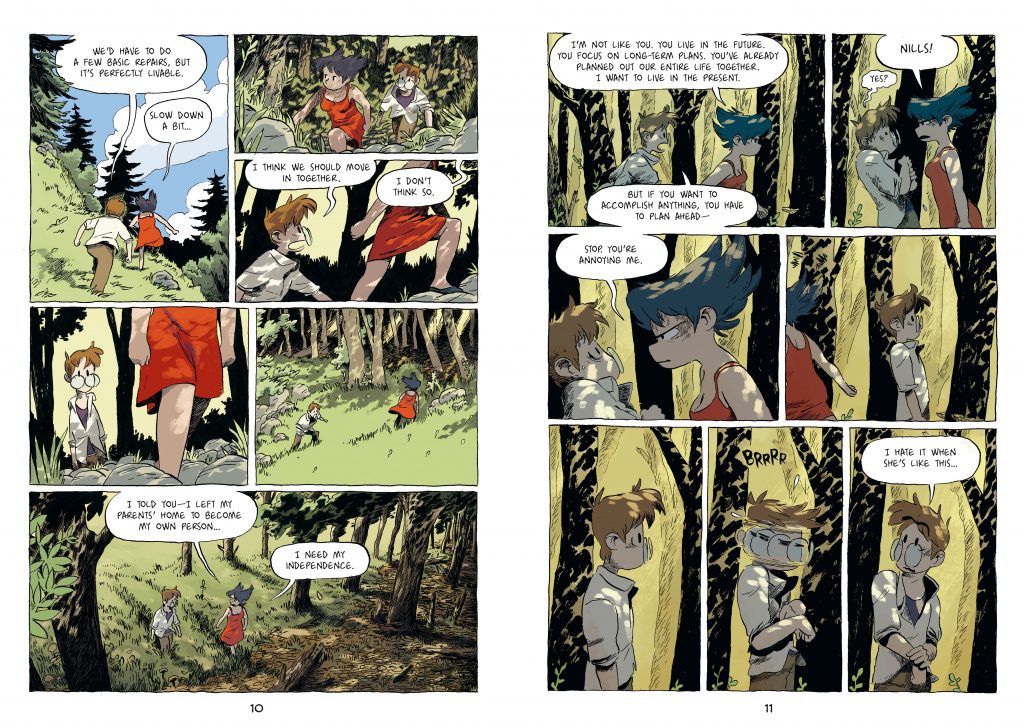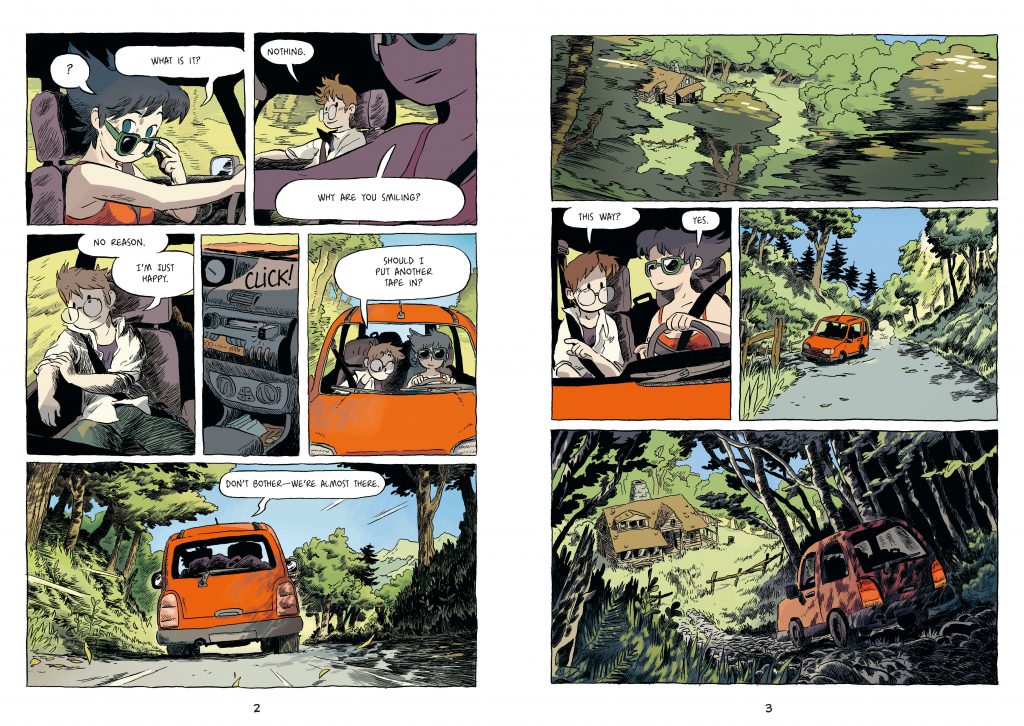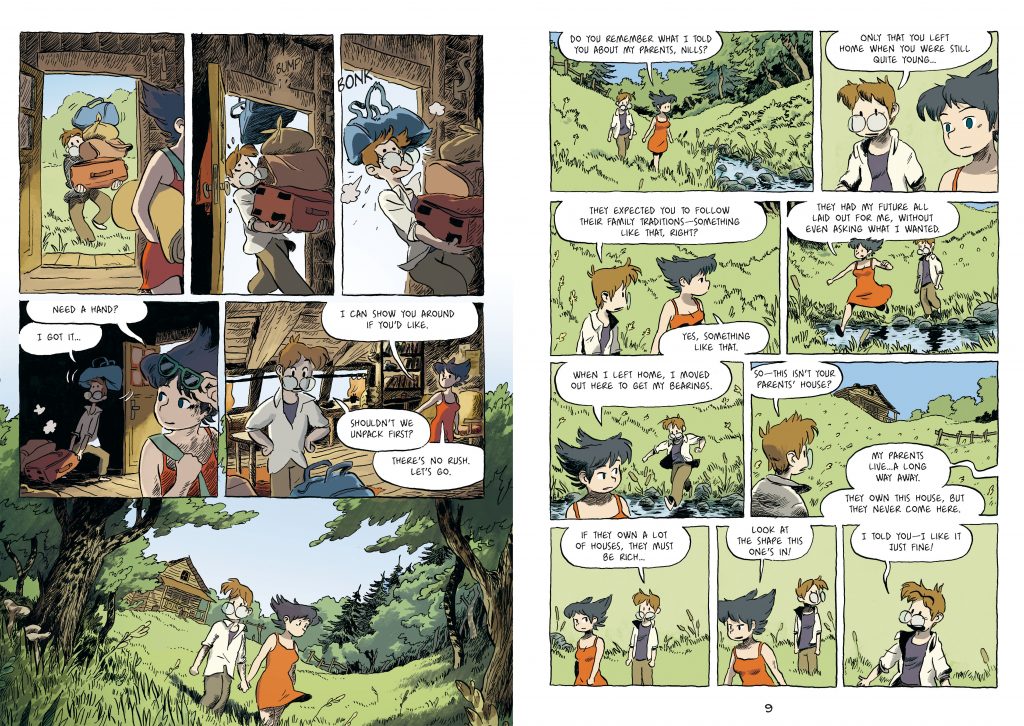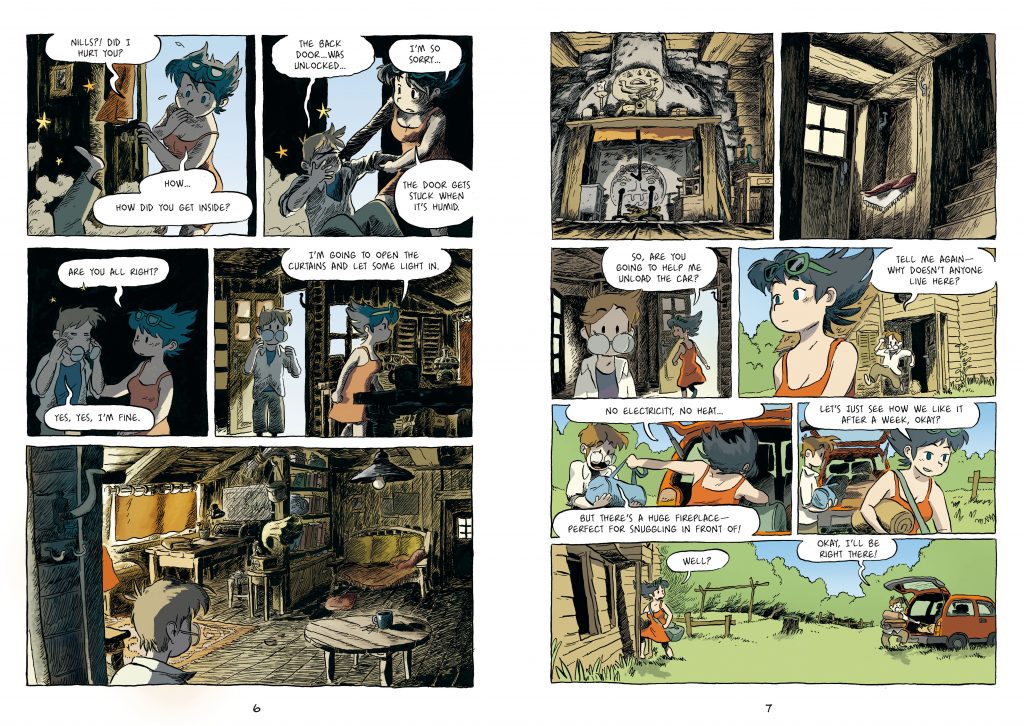Portal fantasies follow similar beats: an everyman, typically beaten down and mild-mannered; a love interest, typically distant and aloof from the protagonist. There’s an inciting incident, a means of getting into an incredible fantastic world. The protagonist and the love interest are separated; the love interest is captured and imprisoned. Discovering colorful characters and magical talents, the protagonist pursues their love interest, and, triumphantly, they reunite. Love conquers everything.
That’s how all these stories go.
In the past few years, manga and anime have been flooded with ‘isekai’ titles, which are based on protagonists being trapped in video games or awakening in a new world after death (based heavily on video games most of the time). In these stories, the protagonists can shrug off the patheticness that held them back in this world, exploit knowledge lacking in this new world, and otherwise acquire many female companions and great power.

Kairos by Ulysse Malassagne is a portal fantasy. Nills accompanies his girlfriend Anaelle out to the country to the dilapidated house where she was raised. Anaelle, assertive to the point of bullying, left to seek her independence, away from a family that determined her life down to the second. Nills, meek to the point of codependence, wants them to draw closer. Anaelle is more reticent.
On their first night, a portal opens in the house. Dragons emerge, searching for and capturing Anaelle. Nills pursues them, plunging into the portal leading to another world. He’s warned to turn back: this is Anaelle’s world, she has obligations she has forsaken. He shouldn’t sacrifice his life for her. This world is not his own, he doesn’t understand its ways or why Anaelle chose to flee. Nills refuses: he intends to rescue her. No matter the odds, no matter the challenges, Nills will free Anaelle.
That’s how all these stories go.

Ulysse Malassagne is a French cartoonist, animator, and storyboard artist. Kairos is his first fiction graphic novel (he also has a collection of his travel comics, unavailable at this time in English). Currently, he is involved with the French animated series Le college noir complainte d’Auvergne, based on his comics of the same name, produced by Studio La Cachette and Toei Animation. His art style can be described as ‘cartoony,’ not as abstract as manga but not as developed as Herge. This style makes the violence in Kairos jarring and unexpected.
Kairos is a sharp critique of the assumptions we make in our fantasy stories. Nills’ strength comes not from hidden depths but from base shallowness. Nills is convinced he’s acting out of love and, no matter how savage or violent he is, he has pure motivations. That makes everything all right and makes him an unintentional asset for the revolution that’s been bubbling under the surface. If anything, that makes him the most important person in the story – the only person capable of destroying the oppressive monarchy and bringing freedom to the new world. As he progresses, Nills’ body starts to transform, becoming more like a dragon and less like a human.

The perspective of the story is divided between Nills and Anaelle, reflecting the information that neither character has told the other. Nills starts a typical adventurer’s quest, acquiring companions Koyot and Kuma. Kuma was a former monk, still somewhat detached from the world; Koyot is more plucky and immediately takes a shine to nills. Kuma, at best, is deeply concerned with (and towards) Nills, while Koyot insists they stick around while Nills completes his quest. Previous stories inculcate a preference towards Koyot, and to see Kuma come around. The leader of the resistance says that Nills and Anaele’s fates are entwined, suggesting a larger, mystical meaning for the story.
Kairos is very particular in the difference between love and obsession. Those two emotions cross paths, but it’s very important to make the distinction between them. Nills is not in love: he is obsessed. The tragedy of the story is that everyone makes their assumptions about what they assume Nills and Anaelle would want. Anaelle isn’t very forthcoming about what she wants, out of either Nills or from her role as dragon queen. She likes Nills, sure, but not enough to the point where she can trust him with the truth about her life. Where information is lacking, others fill in the gap with their beliefs, where it’s Koyot or the sympathetic dragon that allowed Nills to cross over to the dragon world. This reflects the reader’s expectations of the story.
We see Nills pursue his goals, heedless of the consequences. Rather than Nils’ victories being seen as a virtuous act, Anaelle is horrified. As the story progresses, Nills (wearing large round glasses that mark him as a naive, innocent person) transforms physically more and more into a dragon. As the fighting progresses, and Nills’ foes become more formidable, combat moves from being comical to devastating. Nills moves from being a nuisance to a threat, succeeding only in alienating Nills and losing Koyot, his biggest supporter. At the end of the book, he sheds his glasses, indicating that he is finally seeing clearly.

At the end of Kairos, no one gets reunited. Nills hasn’t rescued Anaelle, and Anaelle doesn’t want to be rescued. Aware of the problems facing her kingdom, she reluctantly accepts her new role as queen with a mind to solving the kingdom’s problems–an outcome nobody foresaw. The dragon kingdom’s mistake was assuming Nills would forget her and move on, but horribly correct that for humans love is a kind of madness.
When you go out to slay the dragons in the world, make sure that you start with yourself.
SOLRAD is made possible by the generous donations of readers like you. Support our Patreon campaign, or make a tax-deductible donation to our publisher, Fieldmouse Press, today.

Leave a Reply